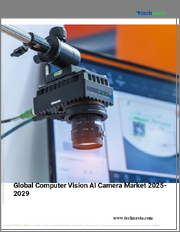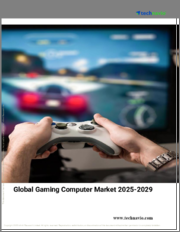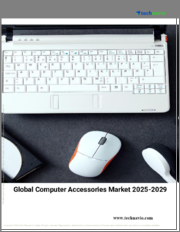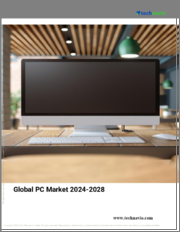
|
시장보고서
상품코드
1676290
세계의 MiniLED 및 MicroLED 시장(2025-2035년)The Global Market for Mini and MicroLEDs 2025-2035 |
||||||
MiniLED 및 MicroLED 디스플레이 시장은 이러한 기술이 기존 디스플레이 솔루션의 치명적인 한계를 다루기 때문에 눈부신 성장을 보여줍니다. MiniLED(50-200마이크로미터)는 LCD 백라이트로서 상업적으로 큰 지지를 얻고 있어 콘트라스트비와 휘도를 향상시킵니다. 한편, MicroLED(50마이크로미터 미만)는 비교할 수 없는 성능 특성을 가진 자발광 디스플레이 기술의 미래를 상징하고 있습니다. 현재 MiniLED 기술은 고급 TV, 하이 엔드 모니터, 상업용 노트북에 널리 채택되어 상업적 상황을 지배하고 있습니다. Samsung, LG, TCL, Apple과 같은 주요 제조업체들은 MiniLED 백라이트를 주요 제품에 통합하고 있습니다.
MicroLED 기술은 뛰어난 휘도, 콘트라스트, 전력 효율을 실현할 가능성이 오랫동안 인정되어 왔습니다. 그러나 제조 공정이 복잡하기 때문에 보급에는 과제가 있었습니다. MicroLED 기술은 주로 초기 상업화 단계에 그치고 있으며, 삼성의 'The Wall'과 LG의 'MAGNIT'는 10만 달러를 넘는 초고급 대형 실장의 대표입니다. 기타 상업 용도로는 AR/VR 용도용의 한정 특수 디스플레이, 자동차 부품, 프리미엄 디지털 사이니지 등이 있습니다.
두 기술의 미래 전망은 매우 유망합니다. MiniLED는 제조 효율이 향상됨에 따라 미드레인지 시장에 계속 침투할 것으로 보입니다. 가장 극적인 성장이 예상되는 것은 스마트폰, 자동차 디스플레이, 게이밍 모니터로, 이들은 MiniLED의 대비와 휘도 향상으로 큰 혜택을 받습니다.
MicroLED는 보다 혁신적이고 장기적인 기회를 나타냅니다. 당초는 AR/VR 용도(2035년까지 530만 대에 달할 전망)와 프리미엄 웨어러블에 성장이 집중되어, 거기서 탁월한 휘도, 효율, 폼 팩터의 장점이 현재의 디스플레이 기술의 치명적인 한계에 대처할 전망입니다. 자동차 부문은 MicroLED가 차세대 헤드업 디스플레이와 정보 시스템을 실현함에 따라 큰 성장 벡터를 보여줍니다.
MicroLED가 보다 널리 채택되기 위해서는 제조 과제가 여전히 제1 장벽이 되고 있으며, 매스 트랜스퍼 수율과 통합의 복잡성이 비용을 끌어올리고 있습니다. 그러나 모놀리식 통합 및 혁신적인 조립 방법과 같은 대체 접근법은 이러한 제약을 해결할 가능성을 보여줍니다. 이러한 제조 과제가 해결되면 MicroLED는 궁극적으로 여러 프리미엄 부문에서 OLED와 MiniLED 기술을 구축하여 2030년대 중반까지 지배적인 디스플레이 기술이 될 수 있습니다.
이 보고서는 세계의 MiniLED 및 MicroLED 시장에 대해 조사 분석하여 현재의 용도, 새로운 기회, 2035년까지의 예측에 관한 상세한 데이터를 제공합니다.
목차
제1장 주요 요약
- MiniLED 시장
- MicroLED 시장
- 세계의 디스플레이 시장
- OLED
- 양자점
- 디스플레이 기술 평가
- MiniLED 및 MicroLED의 장점
- MiniLED 및 MicroLED의 용도
- 시장 및 기술의 과제
- 산업 동향(2020-2025년)
- 중국에서 시장 활동
- 세계의 MiniLED 및 MicroLED의 출하 예측(-2034년)
- MiniLED
- MicroLED
제2장 기술 분석
- MiniLED(mLED) 및 MicroLED(마이크로미터 LED)
- 디스플레이 구성
- MiniLED 디스플레이
- LCD, OLED와의 비교
- 장단점
- 백플레인의 유형
- 비용
- HDR MiniLED 디스플레이
- MiniLED 디스플레이용 양자점 필름
- MiniLED에 있어서 페로브스카이트 칼라 인핸스먼트 필름
- 시장 맵
- 기술 로드맵
- MicroLED 디스플레이
- 개발
- 유형
- 기술 동향
- 생산
제3장 세계의 MiniLED 및 MicroLED 시장
- 소비자용 전자 디스플레이 시장
- MiniLED 양자점 TV
- 제품
- 스마트 워치 및 웨어러블
- 개요
- 제품
- 스마트폰
- 개요
- 시장 진출기업
- Samsung
- LG
- TCL CSOT
- 노트북, 모니터, 태블릿
- MiniLED
- MiniLED 및 MicroLED 노트북, 모니터, 태블릿 제품과 프로토타입
제4장 플렉서블, 신축식, 접이식 MicroLED
- 개요
- 세계의 폴더블 디스플레이 시장
- 제품 개발자
제5장 생명공학, 의료용 디스플레이
- 세계의 의료용 디스플레이 시장
- MiniLED
- MicroLED
- 의료용 MicroLED
- 제품
- 제품 개발자
제6장 자동차
- 세계의 자동차용 디스플레이 시장
- MiniLED
- 대시보드 디스플레이
- 헤드업 디스플레이(HUD)
- 디지털 계기 클러스터
- 앰비언트 조명
- 옥외 조명
- MicroLED
- 헤드업 디스플레이(HUD)
- 헤드 램프
- 제품 개발자
제7장 가상현실(VR), 증강현실(AR), 복합현실(MR)
- 세계의 가상현실(VR), 증강현실(AR), 복합현실(MR) 시장
- MiniLED
- MicroLED
- AR/VR 스마트 글라스, 헤드 마운트 디스플레이(HMD)
- MicroLED 콘택트렌즈
- 제품 및 프로토타입
- 제품 개발자
제8장 투명 디스플레이
- 세계의 투명 디스플레이 시장
- MiniLED 및 MicroLED 투명 디스플레이의 이용
- 제품
- 제품 개발자
제9장 공급망
- MiniLED
- MicroLED
제10장 기업 프로파일(기업 97사의 프로파일)
제11장 부록
제12장 참고문헌
AJY 25.03.25The Mini and MicroLED display market is experiencing impressive growth as these technologies address critical limitations of traditional display solutions. Mini-LEDs (50-200 micrometers) have achieved significant commercial traction as LCD backlights, enhancing contrast ratios and brightness while MicroLEDs (under 50 micrometers) represent the future of self-emissive display technology with unparalleled performance characteristics. Currently, Mini-LED technology dominates the commercial landscape with widespread adoption in premium televisions, high-end monitors, and professional laptops. Major manufacturers including Samsung, LG, TCL, and Apple have integrated Mini-LED backlighting into flagship products.
MicroLED technology has long been recognized for its potential to deliver superior brightness, contrast, and power efficiency. However, the complex manufacturing process has posed a challenge to its widespread adoption. MicroLED technology remains primarily in early commercialization, with Samsung's "The Wall" and LG's "MAGNIT" representing ultra-premium large-format implementations exceeding $100,000. Additional commercial applications include limited specialized displays for AR/VR applications, automotive components, and premium digital signage.
The future outlook for both technologies is exceptionally promising. Mini-LED will continue penetrating mid-range markets as manufacturing efficiencies improve. The most dramatic growth will occur in smartphones, automotive displays, and gaming monitors, which benefit significantly from Mini-LED's enhanced contrast and brightness.
MicroLED represents the more transformative long-term opportunity. Initially, growth will concentrate in AR/VR applications (projected to reach 5.3 million units by 2035) and premium wearables, where exceptional brightness, efficiency, and form factor advantages address critical limitations of current display technologies. The automotive sector presents a significant growth vector as MicroLEDs enable next-generation head-up displays and informational systems.
Manufacturing challenges remain the primary barrier to broader MicroLED adoption, with mass transfer yield and integration complexities driving costs. However, alternative approaches including monolithic integration and innovative assembly methods show promise for resolving these limitations. As these manufacturing challenges are addressed, MicroLED is positioned to eventually displace both OLED and Mini-LED technologies across multiple premium segments, potentially becoming the dominant display technology by the mid-2030s.
"The Global Market for Mini and MicroLEDs 2025-2035" offers granular data on current applications, emerging opportunities, and detailed market forecasts through 2035. As display technologies continue their evolutionary progression from traditional LCD to advanced self-emissive solutions, Mini and MicroLEDs represent the cutting edge of visual display performance, combining exceptional brightness, perfect contrast, extended lifespans, and form factor advantages that are revolutionizing consumer, automotive, medical, and AR/VR applications.
Report contents include:
- Comprehensive overview of the Mini-LED market and MicroLED market, with comparative analyses against competing OLED and quantum dot technologies.
- In-depth Technology Analysis:
- Technical comparison of Mini-LED vs. MicroLED architectures and performance characteristics
- Detailed breakdown of display configurations and backplane technologies
- Comprehensive cost analysis and future cost evolution projections
- Advanced topics including MicroLED efficiency, die architecture, driving mechanisms, and color technologies
- Manufacturing Process Examination:
- Epitaxy and chip processing techniques including MOCVD and MBE
- Critical mass transfer technologies comparison (elastomeric stamp, laser-assisted, fluid self-assembly)
- Monolithic integration processes and heterogeneous wafer approaches
- Color conversion technologies including quantum dots, phosphors, and novel perovskite materials
- Market Segmentation and Forecasts:
- Detailed market projections from 2025-2035 for both Mini and MicroLED technologies
- Segmentation by end-use applications including TVs, smartphones, wearables, automotive, AR/VR
- Unit shipment and revenue forecasts with comprehensive data tables
- Regional market development and manufacturing activity in key economies
- Application-Specific Analysis:
- Consumer electronics market penetration strategies and product timelines
- Automotive display applications from instrument clusters to head-up displays
- Medical and biotech display requirements and implementation roadmaps
- AR/VR/MR specialized MicroLED implementations and technical requirements
- Emerging flexible, transparent, and stretchable display applications
- Competitive Landscape:
- Detailed profiles of 96 companies across the Mini and MicroLED supply chain. Companies profiled include Aledia, ALLOS Semiconductors, Apple, AU Optronics, Avicena, BOE Technology, CEA-Leti, Cellid, Compound Photonics, Comptek Solutions, China Star Optoelectronics (CSOT), C Seed, eLux, Epileds Technologies, Ennostar, Epistar, EpiPix, Everlight Electronics, Focally, Foxconn, Fronics, HannStar Display, Harvatek, HC SemiTek, HCP Technology, Hisense Group, HKC, Hyperlume, iBeam Materials, Innolux, ITRI, Innovation Semiconductor, Jade Bird Display (JBD), Japan Display, Konka Group, Kopin, Kubos Semiconductors, Kulicke and Soffa, Kura Technologies, Kyocera, LedMan Optoelectronics, Lextar, Leyard OptoElectronic, LG Display, Lumens, Lumiode, MICLEDI Microdisplays, Micro Nitride, Mikro Mesa Technology, Mojo Vision, Shenzhen MTC, Nanolumi, Nanosys, Nationstar, Nichia, NS Nanotech, NthDegree, PanelSemi, PlayNitride, Plessey Semiconductors, Polar Light Technologies and more.
- Manufacturing facility investments and production capacity plans
- Strategic partnerships and technology licensing agreements
- Patent landscape and IP development trends
TABLE OF CONTENTS
1. EXECUTIVE SUMMARY
- 1.1. The Mini-LED market
- 1.2. The Micro-LED market
- 1.3. The global display market
- 1.3.1. OLEDs
- 1.3.2. Quantum dots
- 1.3.3. Display technologies assessment
- 1.4. Benefits of Mini- and Micro-LEDs
- 1.5. Mini- and Micro-LEDs applications
- 1.6. Market and technology challenges
- 1.7. Industry developments 2020-2025
- 1.8. Market activity in China
- 1.9. Global shipment forecasts for Mini-LEDs and Micro-LEDs to 2034
- 1.9.1. Mini-LEDs
- 1.9.1.1. Units
- 1.9.1.2. Revenues
- 1.9.2. Micro-LEDs
- 1.9.2.1. Units
- 1.9.2.2. Revenues
- 1.9.1. Mini-LEDs
2. TECHNOLOGY ANALYSIS
- 2.1. Mini-LED (mLED) vs Micro-LED (micrometer-LED)
- 2.1.1. Display configurations
- 2.2. Mini-LED displays
- 2.2.1. Comparison to LCD and OLED
- 2.2.2. Advantages and disadvantages
- 2.2.3. Backplane types
- 2.2.4. Costs
- 2.2.5. High dynamic range Mini-LED displays
- 2.2.6. Quantum dot films for Mini-LED displays
- 2.2.7. Perovskite colour enhancement film in Mini-LEDs
- 2.2.8. Market map
- 2.2.9. Technology roadmap
- 2.3. Micro-LED displays
- 2.3.1. Development
- 2.3.1.1. Sony
- 2.3.2. Types
- 2.3.3. Technology Trends
- 2.3.3.1. MicroLED Efficiency and Display Power Consumption
- 2.3.3.2. MicroLED Die Architecture
- 2.3.3.3. Driving
- 2.3.3.4. Colour
- 2.3.3.5. Monolithic Integration Process (MiP)
- 2.3.3.6. Tiling
- 2.3.3.7. Transparent, Flexible and Stretchable Displays
- 2.3.3.8. Microdisplays
- 2.3.3.9. Sensors
- 2.3.4. Production
- 2.3.4.1. Integration
- 2.3.4.2. Transfer technologies
- 2.3.4.3. Comparison to LCD and OLED
- 2.3.4.4. Micro-LED display specifications
- 2.3.4.5. Advantages
- 2.3.4.5.1. Transparency
- 2.3.4.5.2. Borderless
- 2.3.4.5.3. Flexibility
- 2.3.4.6. Tiled microLED displays
- 2.3.4.7. Costs
- 2.3.4.8. Manufacturing
- 2.3.4.8.1.1. Epitaxy and Chip Processing
- 2.3.4.8.1.2. Chip manufacturing
- 2.3.4.8.1.3. MicroLED Performances
- 2.3.4.8.1.4. Transfer, Assembly and Integration Technologies
- 2.3.4.9. Colour conversion
- 2.3.4.9.1. Comparison of technologies
- 2.3.4.9.2. Full colour conversion
- 2.3.4.9.3. UV LED
- 2.3.4.9.4. Colour filters
- 2.3.4.9.5. Stacked RGB MicroLEDs
- 2.3.4.9.5.1. Companies
- 2.3.4.9.6. Three panel microLED projectors
- 2.3.4.9.7. Phosphor Colour Conversion
- 2.3.4.9.7.1. Overview
- 2.3.4.9.8. Quantum dots colour conversion
- 2.3.4.9.8.1. Mode of operation
- 2.3.4.9.8.2. Cadmium QDs
- 2.3.4.9.8.3. Cadmium-free QDs
- 2.3.4.9.8.4. Perovskite quantum dots
- 2.3.4.9.8.5. Graphene quantum dots
- 2.3.4.9.8.6. Phosphors and quantum dots
- 2.3.4.9.8.7. Quantum dots in microLED displays
- 2.3.4.9.8.8. Challenges
- 2.3.4.9.8.9. Companies
- 2.3.4.9.9. Quantum wells
- 2.3.4.9.10. Improving image quality
- 2.3.4.10. Market map
- 2.3.4.11. Technology roadmap
- 2.3.1. Development
3. THE GLOBAL MARKET FOR MINI- AND MICRO-LEDs
- 3.1. Consumer electronic display market
- 3.1.1. Mini-LED Quantum Dot TV
- 3.1.2. Products
- 3.2. Smartwatches and wearables
- 3.2.1. Overview
- 3.2.2. Products
- 3.3. Smartphones
- 3.3.1. Overview
- 3.4. Market players
- 3.4.1. Samsung
- 3.4.1.1. Wall display
- 3.4.1.2. Neo QLED TV range
- 3.4.1.3. MicroLED CX TV line-up
- 3.4.2. LG
- 3.4.2.1. LG mini QNED range
- 3.4.2.2. MAGNIT Micro-LED TV
- 3.4.2.3. Stretchable 12" microLED touch displays
- 3.4.3. TCL CSOT
- 3.4.3.1. 8 Series and 6 Series
- 3.4.1. Samsung
- 3.5. Laptops, monitors and tablets
- 3.5.1. Mini-LED
- 3.5.2. Mini-LED and Micro-LED laptop, monitor and tablet products and prototypes
4. FLEXIBLE, STRETCHABLE AND FOLDABLE MICRO-LED
- 4.1. Overview
- 4.2. The global foldable display market
- 4.3. Product developers
5. BIOTECH AND MEDICAL DISPLAYS
- 5.1. The global medical display market
- 5.2. Mini-LEDs
- 5.3. Micro-LEDS
- 5.3.1. Micro-LEDs for medical applications
- 5.3.1.1. Implantable Devices
- 5.3.1.2. Lab-on-a-Chip
- 5.3.1.3. Endoscopy
- 5.3.1.4. Surgical Displays
- 5.3.1.5. Phototherapy
- 5.3.1.6. Biosensing
- 5.3.2. Products
- 5.3.1. Micro-LEDs for medical applications
- 5.4. Product developers
6. AUTOMOTIVE
- 6.1. Global automotive displays market
- 6.2. Mini-LED
- 6.2.1. Dashboard Displays
- 6.2.2. Head-Up Displays (HUDs)
- 6.2.3. Digital Instrument Clusters
- 6.2.4. Ambient Lighting
- 6.2.5. Exterior Lighting
- 6.3. Micro-LEDs
- 6.3.1. Head-up display (HUD)
- 6.3.2. Headlamps
- 6.4. Product developers
7. VIRTUAL REALITY (VR), AUGMENTED REALITY (AR) AND MIXED REALITY (MR)
- 7.1. Global market for virtual reality (VR), augmented reality (AR), and mixed reality (MR)
- 7.2. Mini-LEDs
- 7.3. Micro-LEDs
- 7.3.1. AR/VR Smart glasses and head-mounted displays (HMDs)
- 7.3.2. Micro-LED contact lenses
- 7.3.3. Products and prototypes
- 7.4. Product developers
8. TRANSPARENT DISPLAYS
- 8.1. Global transparent displays market
- 8.2. Mini-LED and Micro-LED transparent displays applications
- 8.2.1. Products
- 8.3. Product developers
9. SUPPLY CHAINS
- 9.1. Mini-LEDs
- 9.2. Micro-LEDs



















